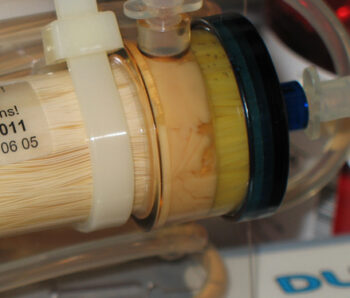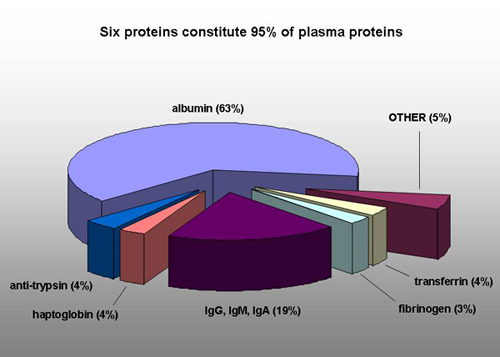Creating a Certified Working Cell Bank for Important Cell Lines in Your Research Program
Mutational changes, aging and evolution continually occur in all actively growing cell cultures. The longer cultures are maintained and passaged, the more these changes accumulate.
How Can I Avoid Mycoplasma Contamination and Other Serious Cell Culture Problems?
There are no secret tricks to avoiding mycoplasma contamination or other serious cell culture problems. It requires a full understanding of the nature and causes of the problems followed by the development of a comprehensive program to actively manage your cell cultures, laboratory facility and personnel…
Connecting Two Bottles of Medium to the Cartridge
The larger cartridges, C2018 and C2003 can contain as many cells as 200-400 roller bottles. They can consume two liters of medium per day or more. You can get 2 and 4 liter autoclavable carboys from Nalgene to use as a medium reservoir or you can simply connect two 1 liter bottles of medium in series as shown in the photo.
Here’s A Way to Squeeze a Little Extra Antibody When You are Producing them from Hybridomas in our Hollow Fiber Cartridges
Simply perform your harvest as usual. One of the issues that many researchers have when using our system is that they are afraid to harvest out too many cells. The cartridge can be overgrown if you don’t remove cells. After centrifugation your cell pellet should be between 1-3 mL or more (with the C5011 as much as 5 mL).
The Cells “See” the Volume of Media in the Reservoir Bottle
Too few cells in relation to volume of media can result in lag phase. In the hollow fiber cartridge lag phase can be defined by the cells not consuming glucose but still show significant viability via the trypan exclusion assay. Always seed the cartridge with the recommended cell density.
Good Laboratory Practices are Key to Productivity
To keep contamination at a minimum, clean the inside of the hood weekly, remembering to remove the working surface and clean underneath. Be sure the hood is validated on a regular basis. Never pour media, always pipette. Always wear a lab coat. Wait 60 seconds for the air currents to tabilize inside the incubator.






